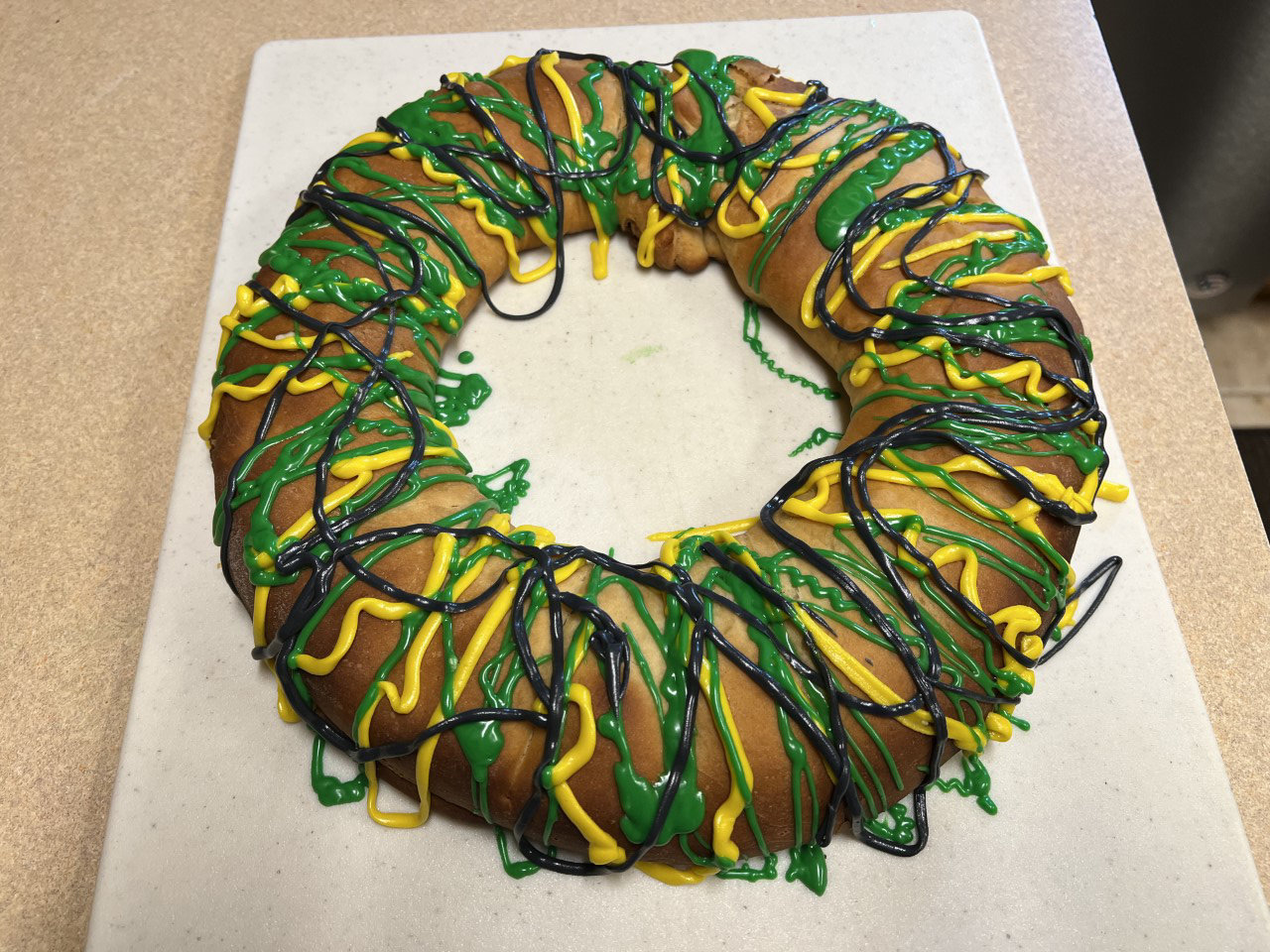Mardi Gras falls on Feb. 21 this year. The name means “Fat Tuesday,” and it designates the last day before the start of the Lenten …
Join our family of readers for as little as $5 per month and support local, unbiased journalism.
Already have an account? Log in to continue. Otherwise, follow the link below to join.
Please log in to continue |

Does your Mardi Gras tradition include a King Cake?
Mardi Gras falls on Feb. 21 this year. The name means “Fat Tuesday,” and it designates the last day for feasting before the start of the Lenten season on Ash Wednesday.
Mardi Gras is celebrated by Christians all over the world. It is known by different names. In Germany, it is Fasching. In Brazil, it is Carnival. In many places, the celebration is marked by feasting, parades, costumes and parties. The tradition dates back thousands of years. According to history.com, the celebration started with the pagan tradition to celebrate the end of winter. As Christianity spread through Europe, Christian leaders knew the people would not want to give up their traditional festivals so they adapted them to the Christian calendar. As a result, the feasting and partying became a prelude to the Lenten Season.
In Christian tradition, Lent marks 40 days of fasting and prayer before Easter. The first day of Lent is known as Ash Wednesday because Christians would mark their foreheads with ashes to show repentance for their sins.
Because Easter Sunday is not a set date on the calendar, Ash Wednesday also moves around on the calendar. Easter is celebrated on the first Sunday after the first full moon following the Spring Equinox. The date for Easter is based on the lunar cycles of the Jewish calendar. In the Christian religion, the Last Supper (which was the final meal Jesus shared with his apostles before his crucifixion) was a Passover feast. Passover is determined by the Jewish calendar and Easter is the Sunday after Passover.
Early Christians feasted before Lent in anticipation for fasting for 40 days before Easter, which often included excluding meat from their diet. The Latin word for meat is carne and vale means farewell. So Carnival means “farewell to meat.”
The Mardi Gras tradition came to the United States with French explorers. The first documented Mardi Gras celebration in North America was on March 3, 1699.
The King Cake tradition dates back to the Middle Ages. The Carnival or Fasching season starts on Jan. 6, the feast of the Three Kings, which honors the story of three wise men bringing gifts to the Christ child. A special cake was designed as part of the celebration was named in honor of the Three Kings. While there are many different recipes for King Cake, most resemble a ring of coffee cake or pastry. Some King Cakes have a cream cheese filling. Some include pecans. The King Cake is a circle as a reminder of the circular route the wise men took to find the Christ child.
Some early King Cakes contained a bean or a coin. The person who found the item in their slice of cake was supposed to have good luck for the coming year and was sometimes declared king of the celebration. In the 1940s, a New Orleans bakery put tiny baby figurines in their King Cakes to honor the baby Jesus. In addition to enjoying good luck, whoever finds the baby in their cake is supposed to host the next Mardi Gras party – or at least buy the next King Cake.
Note that the plastic babies are put in the cake after it is baked by making a small hole in the bottom of the cake before it is decorated. Due to concerns that someone might choke on the plastic toy, many bakeries now provide the plastic toy to customers in a separate package.
King Cakes are traditionally decorated with purple, green and gold icing. These colors have represented Mardi Gras in New Orleans since 1872. According to one story, Grand Duke Alexei Alexandrovich of Russia visited New Orleans that year and handed out purple, green and gold beads because those were his house colors. Purple and gold are associated with royalty. According to heraldry, purple stands of justice. Green stands for faith. Gold stands for power.